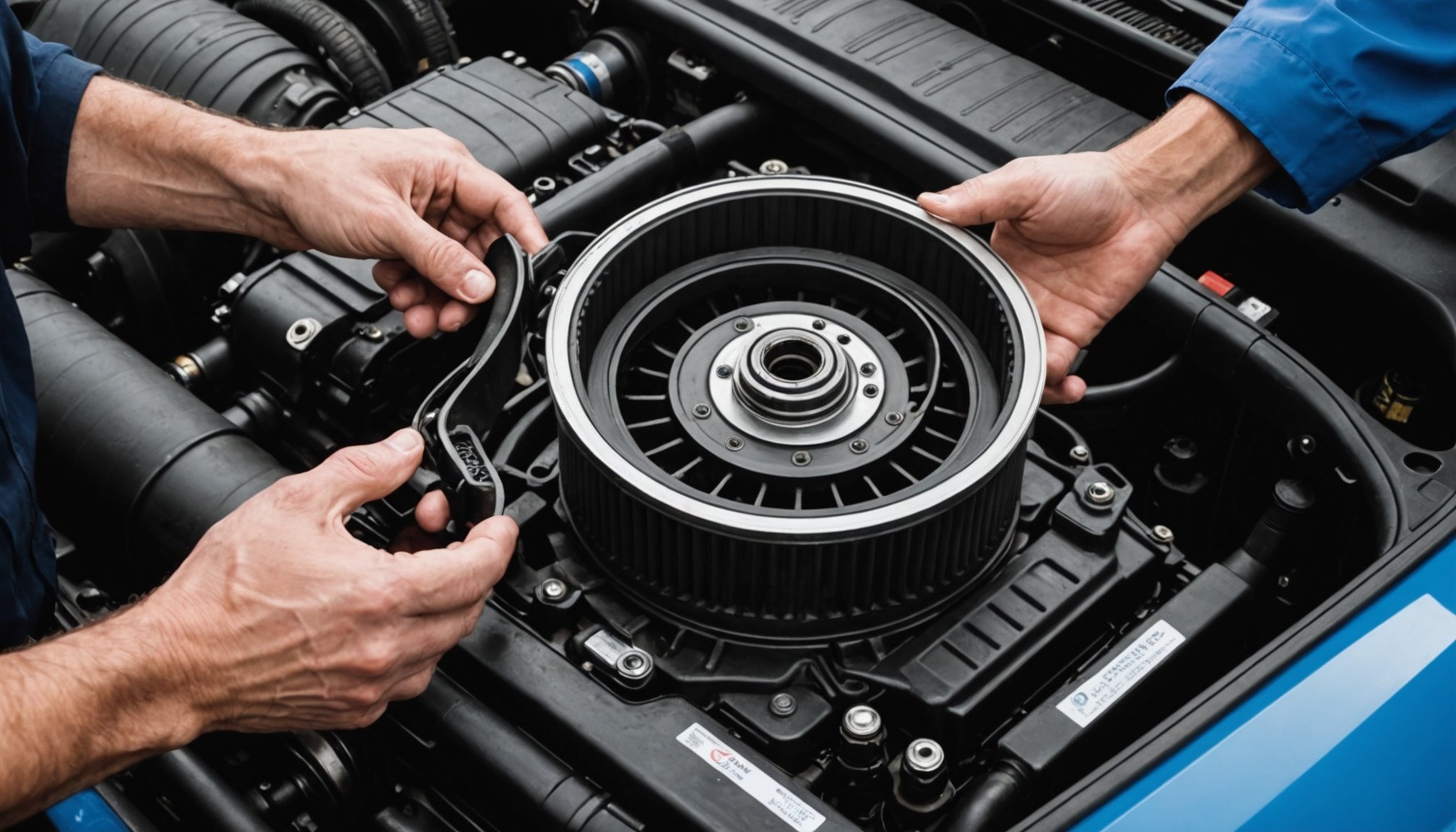Car maintenance isn’t just about fueling up, washing, and regular servicing. A significant part of it involves taking care of the engine and the various components that help it run smoothly. One such component, often overlooked, is the serpentine belt. This belt controls many critical systems within your vehicle, including the power steering pump, alternator, and the air conditioning compressor.
When the serpentine belt starts to wear out, your vehicle’s performance can suffer dramatically. In extreme cases, a broken belt can result in vehicle breakdown. So, knowing how to inspect and replace this belt can save you from unexpected trouble on the road. This article will guide you through the process of replacing a serpentine belt on an SUV in detailed steps.
In parallel : What is the correct way to handle a power steering failure while driving on a highway?
Understanding the Role of the Serpentine Belt
Before we dive into the replacement process, let’s take a moment to understand the role of the serpentine belt in your automotive. This belt, also known as a multi-vee, poly-v, or multi-rib belt, is a single, continuous belt used to drive multiple peripheral devices in an engine, such as an alternator, power steering pump, water pump, air conditioning compressor, and more.
These belts play a crucial role in the operation of your engine. If they break or malfunction, it can lead to the failure of these devices, potentially causing significant damage to your engine.
In parallel : How should you secure a kayak on the roof of an SUV to ensure it doesn’t shift while driving?
Identifying the Need for a Replacement
It is essential to know when to replace your serpentine belt. Most manufacturers recommend replacement every 60,000 to 100,000 miles. However, it’s always a good idea to inspect the belt regularly for signs of wear or damage. You can do this by looking at the belt’s surface. If you see cracks, pieces missing, or the belt looks shiny or ‘glazed,’ it’s time for a replacement.
If you hear a squealing noise coming from the engine while driving, it’s a clear sign that the belt is slipping, possibly due to wear, and you need to replace it.
Gathering the Necessary Tools and Preparations
Before starting with the replacement process, gather all the necessary tools. You’ll need a ratchet or breaker bar with a socket that fits the tensioner pulley, a new serpentine belt, and a belt routing diagram.
You can usually find a belt routing diagram in your vehicle’s manual. If not, make sure to draw one before removing the old belt. It’s crucial to know the exact routing path of the serpentine belt around the various pulleys.
Ensure you’re working on a cool engine to avoid burns. Using a flashlight, locate the serpentine belt and tensioner pulley at the front of your engine.
Removing the Old Serpentine Belt
The serpentine belt is kept tight on the pulleys by the tensioner. You’ll need to release this tension to remove the belt.
Place the socket on the tensioner pulley bolt and turn it clockwise to relieve the tension on the belt. Slide the belt off the pulleys and slowly release the tensioner.
Ensure not to let the tensioner snap back after removing the belt, as this could damage it. Inspect all the pulleys and the tensioner for wear or damage. If needed, replace them before installing the new belt.
Installing the New Serpentine Belt
When installing the new belt, refer to your belt routing diagram.
Starting from the bottom, loop the belt around the pulleys following the diagram. Make sure the belt sits properly in the pulley grooves.
Once you’ve routed the belt, use the socket and turn the tensioner pulley bolt clockwise again to allow enough slack to slide the belt onto the last pulley. Once the belt is on all pulleys, slowly release the tensioner. It will automatically apply the correct tension to the belt.
After installation, double-check to make sure the belt is seated correctly on all pulleys and follows the routing diagram. Start your engine and let it idle for a few minutes. If you hear any unusual noises, shut off the engine immediately and recheck your installation.
By following these steps, you can safely replace the serpentine belt on your SUV, ensuring your vehicle continues to run efficiently and reliably. Remember, regular inspection and maintenance can prevent unexpected breakdowns and costly repairs. Stay safe and happy driving!
Avoiding Common Mistakes in Serpentine Belt Replacement
There are several common mistakes that people make when replacing their serpentine belt, which can lead to more significant problems down the line. One of the most common errors is not checking the condition of the tensioner and pulleys before installing the new belt. If these components are worn out or damaged, they should be replaced along with the belt. Otherwise, they can cause the new belt to wear out prematurely or not function correctly.
Another common mistake is not correctly routing the new belt according to the belt routing diagram. Improper routing can lead to the belt slipping off the pulleys, causing damage to the belt and the engine. Make sure to refer to the belt routing diagram, which can usually be found in the vehicle’s manual. If the diagram is not available, consider taking images thumb of the old belt before you remove it as a guide.
Lastly, many people forget to inspect the new belt before installation. Check for any signs of damage such as cracks or tears. Even a brand new belt can have defects, so it’s always a good idea to inspect it before installation.
Avoid these common mistakes to ensure a successful serpentine belt replacement and keep your vehicle running smoothly.
Conclusion: The Importance of Regular Inspection and Replacement
In conclusion, the serpentine belt plays a crucial role in the smooth operation of your SUV. Regular inspection and timely replacement of this belt are essential to prevent unexpected breakdowns and costly repairs. While the process of replacing the serpentine belt may seem daunting, it can be accomplished with a bit of time and the right tools.
Remember, the key to a successful replacement is preparation. Gather all your tools beforehand, obtain a belt routing diagram, and inspect your new belt for any defects. Also, avoid common mistakes like not checking the condition of the tensioner and pulleys, or not correctly routing the new belt.
By following the detailed steps provided in this article, you can successfully replace your serpentine belt and ensure your vehicle continues to run efficiently and reliably. As always, if you feel uncomfortable performing this repair yourself, seeking professional help is a wise decision.
Here’s to safe, smooth, and worry-free driving! Remember, a well-maintained vehicle is not just a means of transportation but a reflection of the driver. Keep on top of your maintenance and enjoy the peace of mind that comes with a well-run vehicle.













